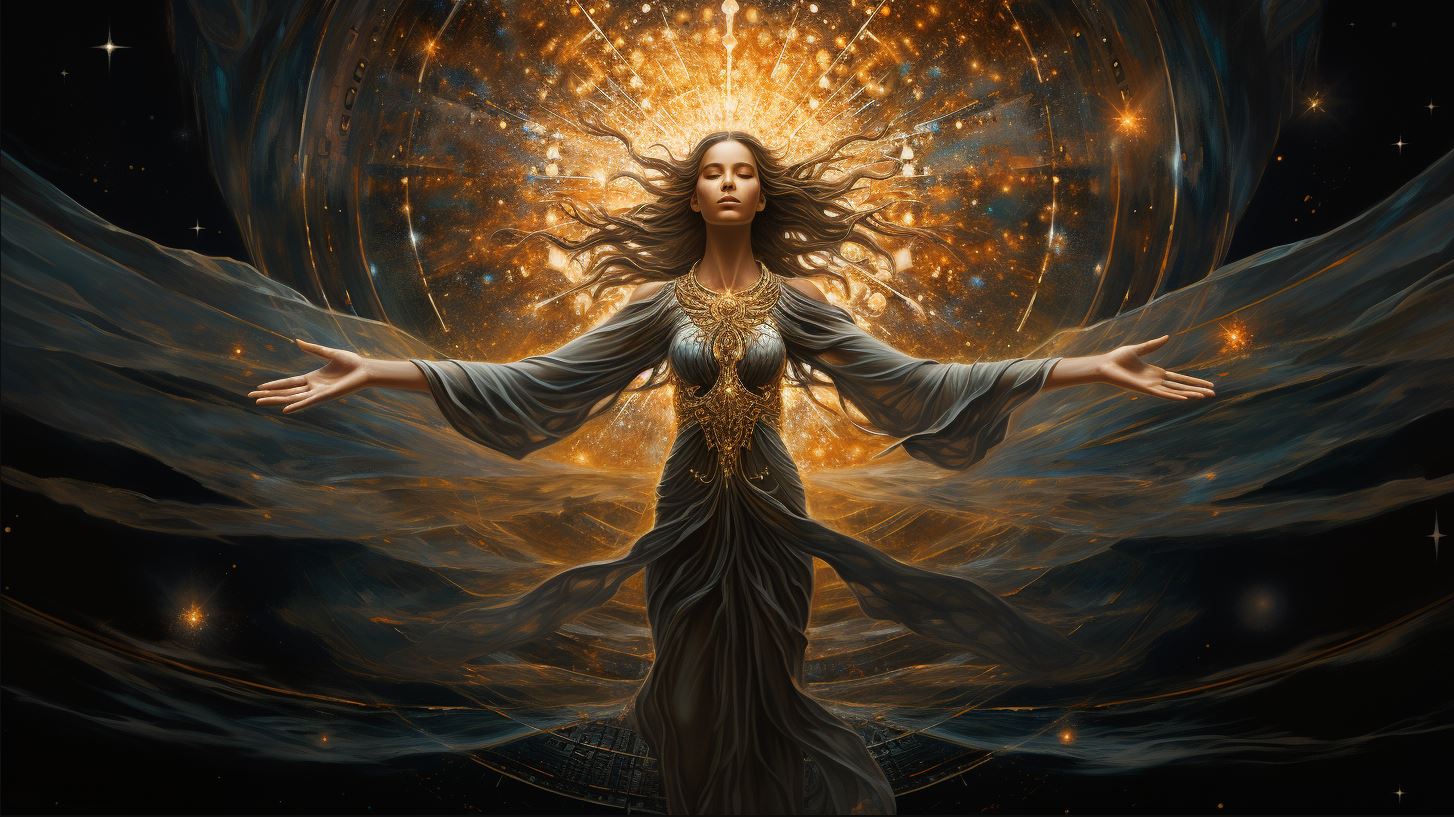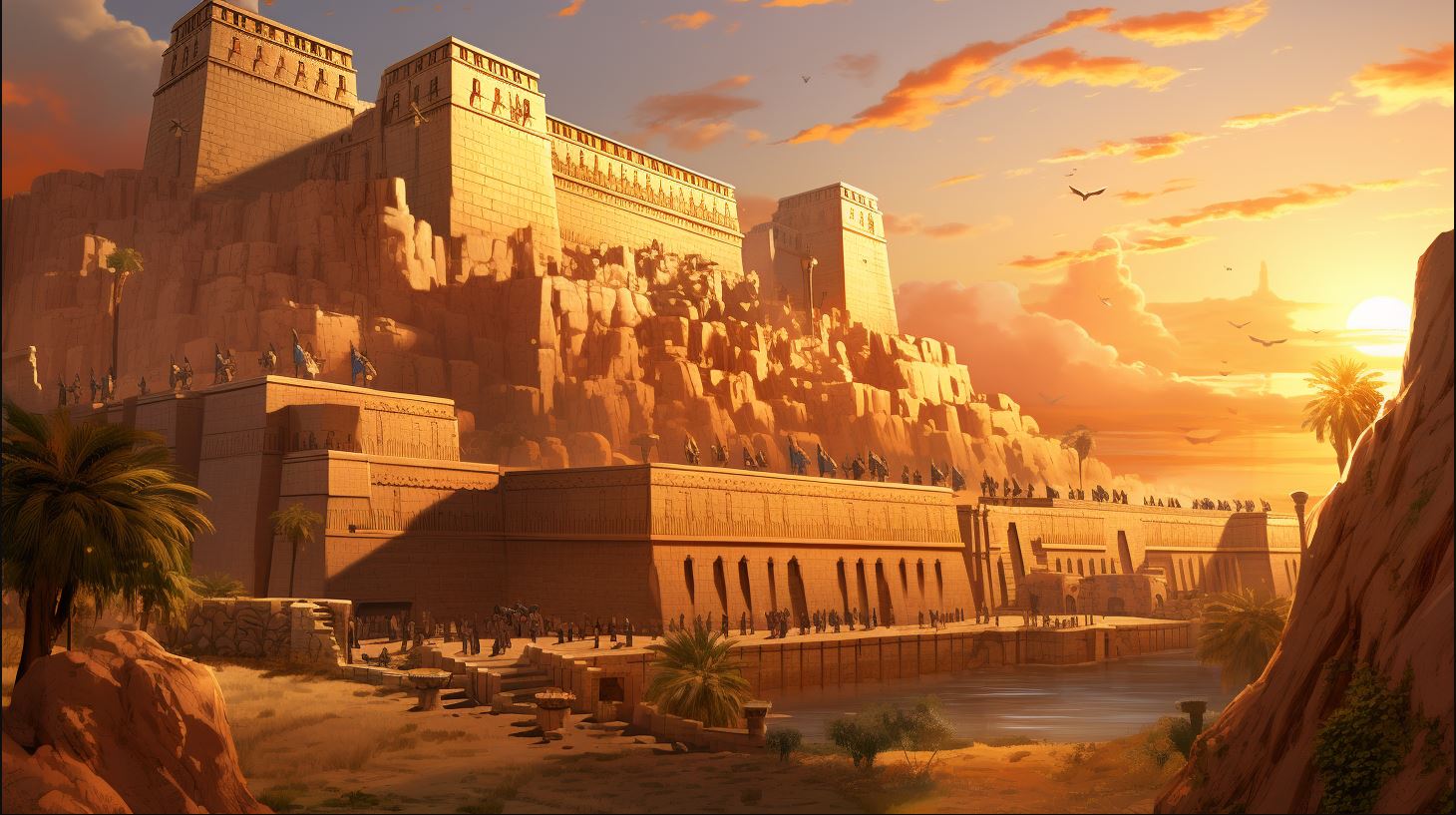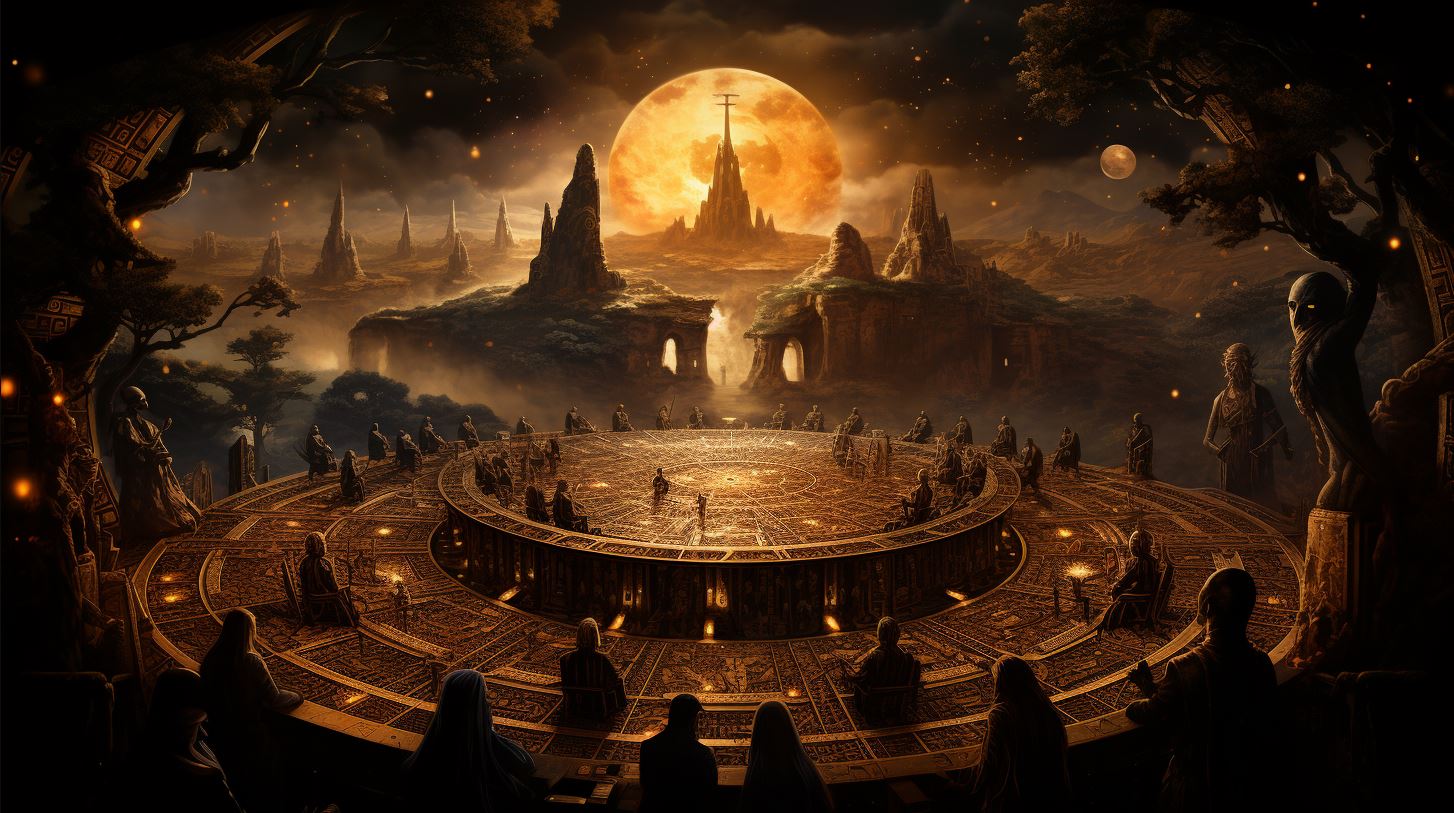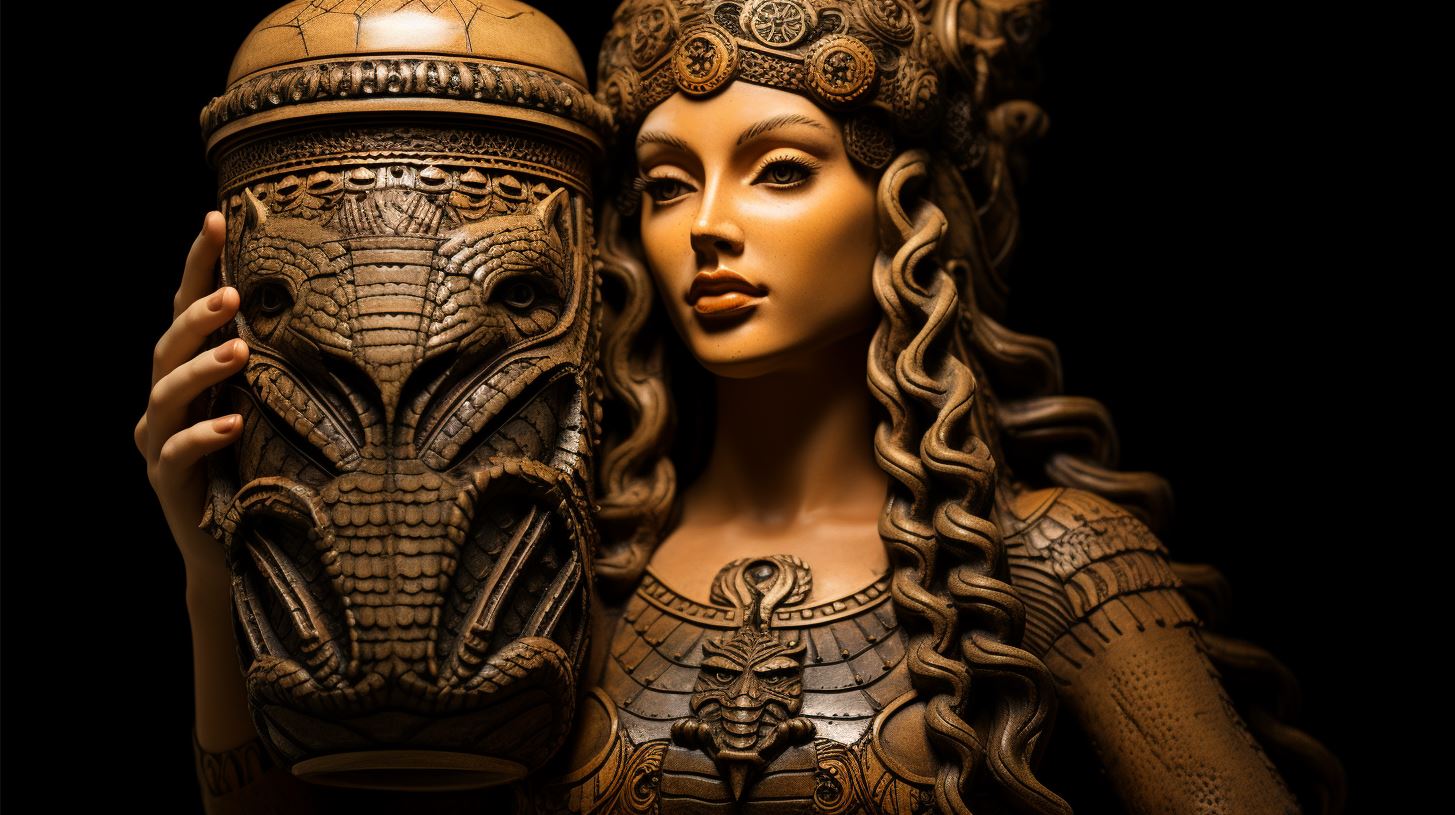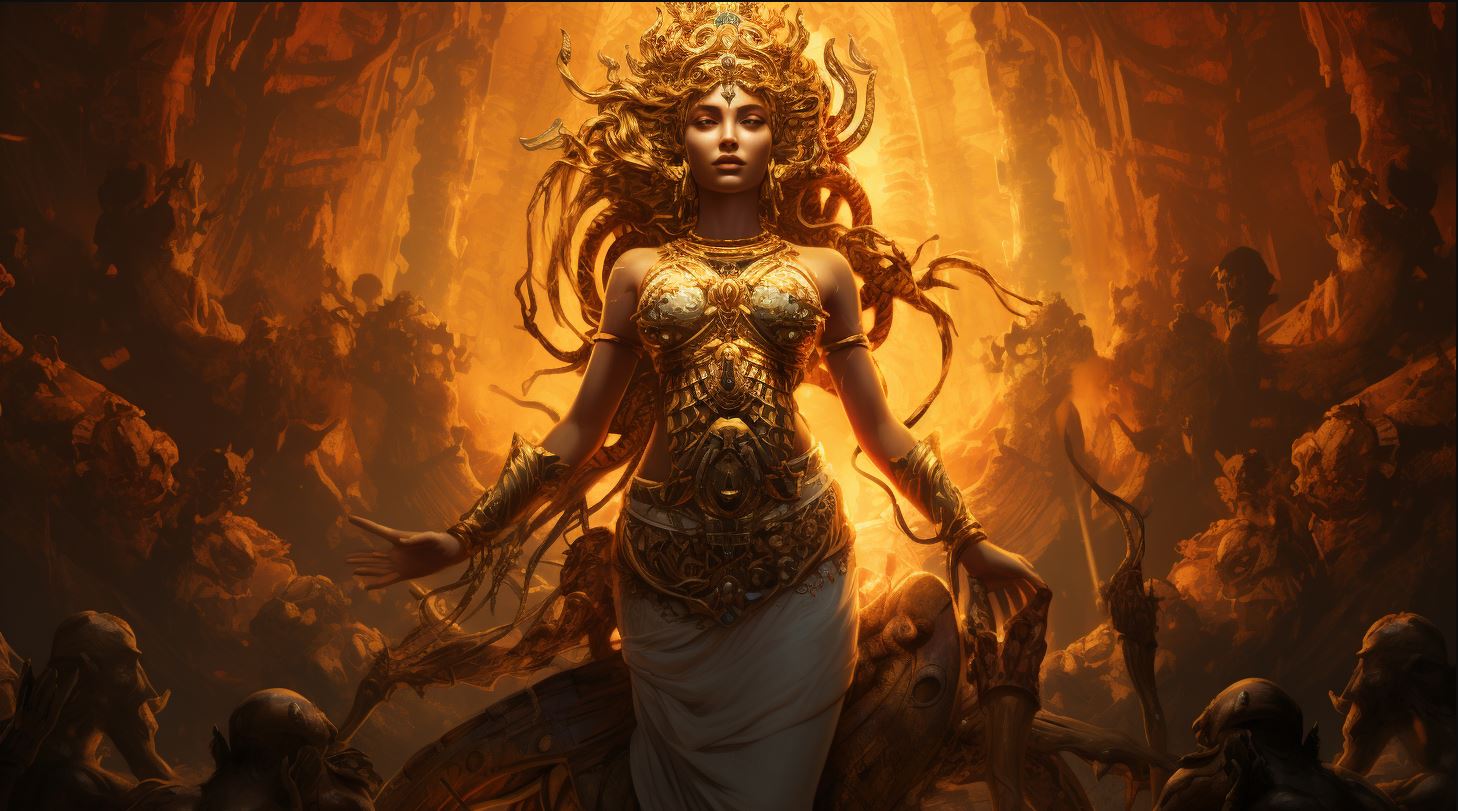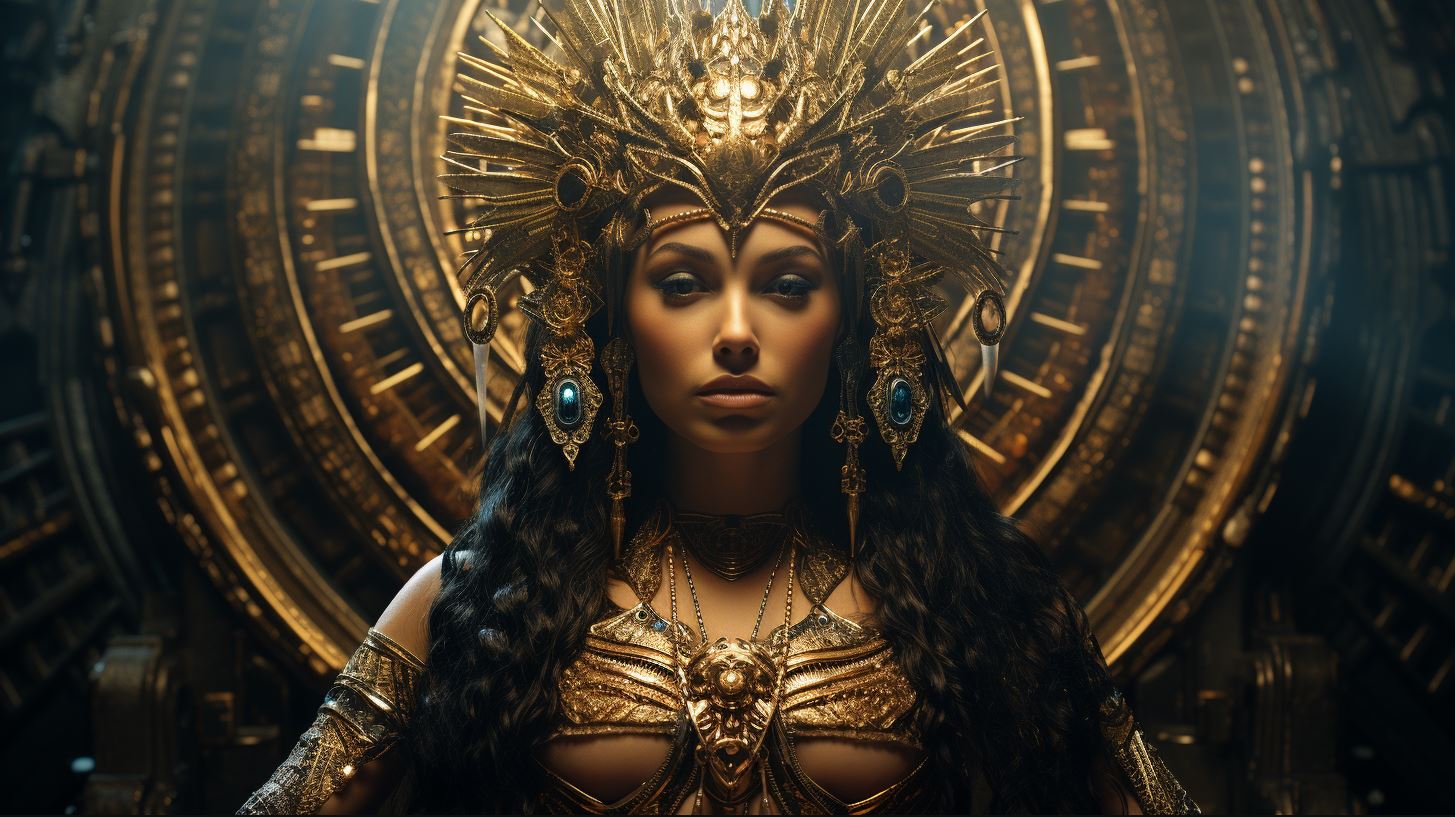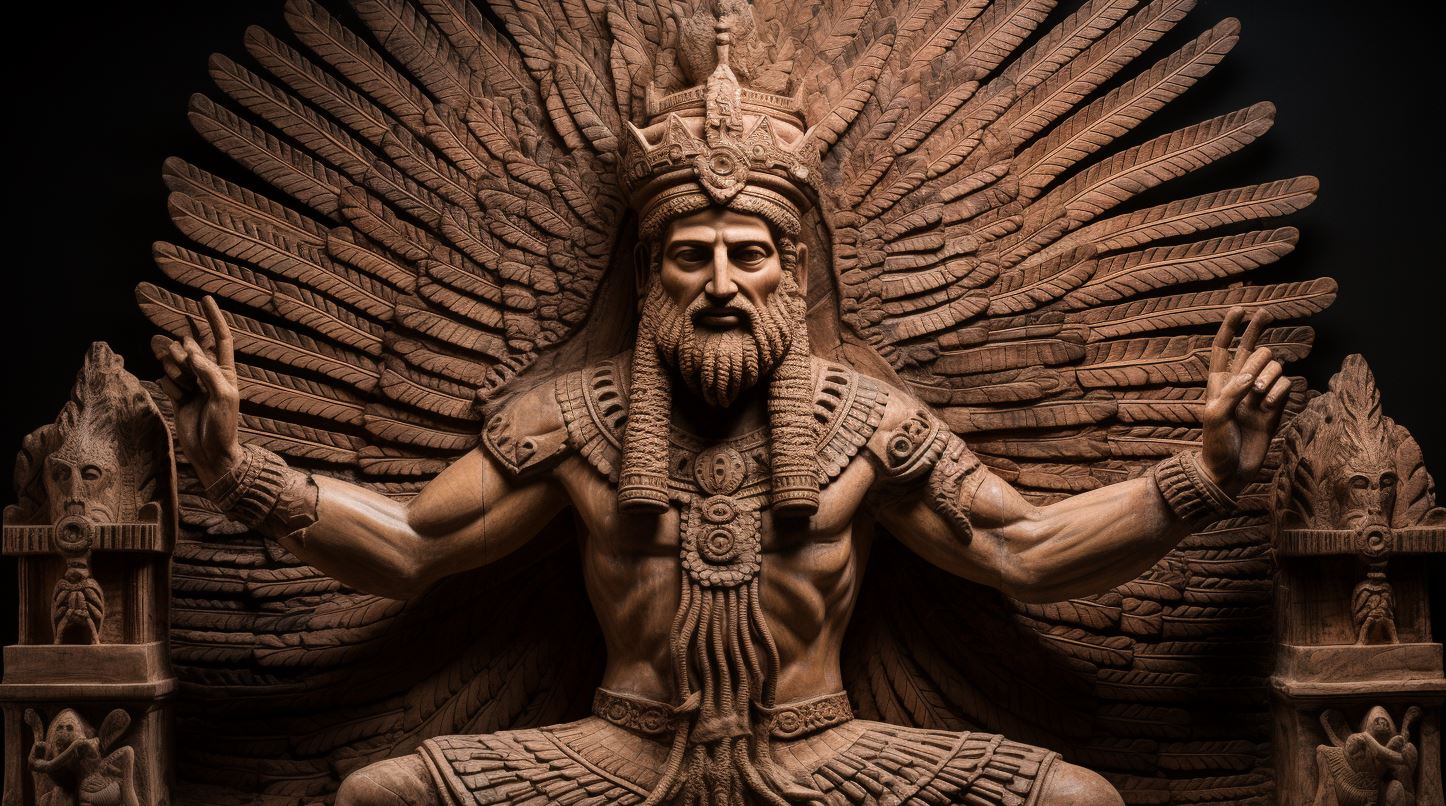Ninsun Goddess: Unveiling the Divine Mother and Powerful Protector in Mesopotamian Mythology

Ninsun, the Mesopotamian goddess, held a prominent place among the ancient Mesopotamians. As the mother of the legendary hero Gilgamesh and the wife of the deified king Lugalbanda, Ninsun played diverse roles in the epic poem.
She advised her son, interpreted his dreams, and embraced Enkidu as part of their family. Worshiped as a divine mother, Ninsun was also associated with the goddess of medicine, Gula. Her cult centers were established in Lagash, Nippur, Ur, and Umma, featuring the Emah Temple dedicated to her honor. Ninsun’s beauty and dream interpretation further shaped her significance in Gilgamesh’s journey, making her a symbol of maternal divinity and protection.
The Mythical Origins of Ninsun Goddess
The story of Ninsun Goddess begins with her mythical origins in ancient Mesopotamia. She was revered as a divine figure, renowned for her association with powerful kings and her esteemed role as the mother of Gilgamesh, the legendary hero.
According to Mesopotamian mythology, Ninsun was born from the union of the sky god Anu and the earth goddess Uras. Her birth granted her divine qualities, making her a prominent figure within the pantheon of Mesopotamian deities.
Ninsun’s divine lineage set her apart, attributing her with unique powers and attributes. She embodied the sacred connection between the heavens and the earth, symbolizing the harmony and balance of the cosmos.
Her existence represented the bridge between mortal existence and the realm of the divine, elevating her status in the eyes of the ancient Mesopotamians.
As the mother of Gilgamesh, Ninsun played a pivotal role in his life.
Her influence and guidance shaped his destiny and determined his heroic path. She was an advocate for him, providing counsel and support in his endeavors.
Ninsun’s mythical origins and divine lineage positioned her as a figure of reverence and maternal protection.
She was regarded as a source of divine wisdom and a nurturing presence, embodying the qualities that ancient Mesopotamians associated with the ideal mother figure.
Ninsun in the Epic of Gilgamesh
In the epic poem of Gilgamesh, Ninsun plays a significant role as the mother of Gilgamesh, providing guidance, wisdom, and support throughout his journey.
The Mother of Gilgamesh: Ninsun’s Role and Importance
Ninsun’s role as the mother of Gilgamesh is crucial to the narrative of the epic. She represents the divine maternal figure, offering unconditional love, protection, and guidance. As Gilgamesh’s mother, Ninsun holds a position of influence and authority, actively involved in shaping his destiny.
Ninsun’s Guidance: Interpreting Dreams and Advising Gilgamesh
One of Ninsun’s remarkable abilities is her aptitude for dream interpretation. Through her deep understanding of symbolism and divine omens, she helps Gilgamesh decipher his dreams and extract their hidden meanings.
Ninsun’s interpretations provide valuable insights and counsel, guiding Gilgamesh on his heroic quests.
Ninsun and Enkidu: Acceptance and Equality
When Enkidu, a wild man created by the gods, enters Gilgamesh’s life, Ninsun displays her compassionate and accepting nature. She readily embraces Enkidu as a member of their family, advocating for equality and empathy.
Ninsun’s acceptance of Enkidu strengthens their bond and sets the stage for their shared adventures.
Note: The provided content does not include an introduction for the “Ninsun in the Epic of Gilgamesh” section as it is not specified in the request.
Ninsun’s Divine Family and Associations
Ninsun, the revered Mesopotamian goddess, had a significant divine family and various associations in ancient mythology.
Lugalbanda: The Deified Legendary King and Ninsun’s Husband
Lugalbanda, the legendary king who was deified in Mesopotamian culture, was the husband of Ninsun. He held a prominent place in mythology and was considered the father of Gilgamesh, Ninsun’s renowned son.
Ninsun’s Other Children and Relations
Besides Gilgamesh, Ninsun was blessed with ten other children. While their names may not be as well-known, they held familial ties to Ninsun and contributed to the complex tapestry of Mesopotamian mythology.
Ninsun’s Connection to Gula: The Goddess of Medicine
Ninsun also had a fascinating association with Gula, the revered goddess of medicine. Her connection to Gula further solidifies her significance in aspects of healing and well-being among the ancient Mesopotamians.
Together, Ninsun’s divine family and associations showcase her esteemed position in ancient Mesopotamian society and highlight her role as a revered goddess with ties to important figures and concepts in mythology.
Ninsun’s Worship and Cult Centers
Explore the worship and cult centers dedicated to Ninsun, the revered Mesopotamian goddess. These centers were vital pillars of devotion and reverence, attracting worshippers from far and wide.
Main Cult Centers: Lagash, Nippur, Ur, and Umma
Across ancient Mesopotamia, cities revered Ninsun in various cult centers. Lagash, Nippur, Ur, and Umma were among the main centers where the goddess held significant influence and divine presence.
The city of Kikalkivlocated within the region of Lagash, was a prominent hub for the worship of Ninsun. Its inhabitants deeply honored the goddess and sought blessings from her as they embarked on their daily lives.
In Lagash, the faithful erected splendid temples and offered prayers and sacrifices to honor Ninsun. The city became an important religious destination, drawing pilgrims seeking solace and divine intervention.
Another significant cult center dedicated to Ninsun was Nippur, a city known for its rich religious heritage.
Ninsun’s worshipers flocked to Nippur, eager to connect with her maternal energy and receive her protection.
Ur, the legendary city of Mesopotamia, also boasted a prominent cult center devoted to Ninsun.
The worshippers gathered here to express their devotion and seek her guidance in matters of both personal and communal importance.
Umma, renowned for its cultural and historical significance, was yet another city where Ninsun’s presence radiated through its revered cult center.
The inhabitants embraced her as a divine mother, relying on her protective powers and blessings.
The Emah Temple: Honoring Ninsun’s Divine Presence
At the heart of Ninsun’s worship lay the magnificent Emah Temple, built to honor her divine presence. This sacred sanctuary served as a gathering place for devoted worshippers, who sought solace in her maternal grace.
The Emah Temple stood as a majestic testament to Ninsun’s significance in the lives of the ancient Mesopotamians. Decorated with intricate carvings and vibrant murals showcasing her mythical journey, the temple created an awe-inspiring atmosphere of reverence.
Within the hallowed halls of the Emah Temple, priests conducted rituals and ceremonies to pay homage to Ninsun’s sacred essence. Worshippers offered prayers, performed sacred rites, and presented symbolic offerings to gain her favor and protection.
Devotees of Ninsun believed that by visiting the Emah Temple and participating in its rituals, they could forge a deeper connection with the goddess and seek her intercession in their daily lives.
The Emah Temple became a spiritual beacon, attracting pilgrims from all corners of Mesopotamia who sought the solace and guidance of the revered Ninsun, the divine mother and protector.
Immerse yourself in the worship and rituals of Ninsun, experiencing the profound devotion and reverence that the Mesopotamians held for this esteemed goddess.
Ninsun’s Beauty and Interpretation of Dreams
Within Mesopotamian mythology, Ninsun, the revered goddess, possessed not only divine wisdom but also remarkable physical beauty that captivated those in her presence. Her allure and grace embodied the Mesopotamian ideal of femininity, symbolizing both maternal divinity and a powerful protective force.
Ninsun’s Physical Beauty: The Mesopotamian Ideal
Ninsun’s appearance was beyond compare, radiating a celestial aura that left all who beheld her in awe. Mesopotamian art often depicted her with flowing locks of lustrous hair, reflecting her status as a goddess of immense beauty.
Her eyes, likened to radiant stars, conveyed both wisdom and compassion, drawing the admiration of gods and mortals alike.
As the personification of feminine grace, Ninsun embodied the Mesopotamian ideal of physical beauty, which emphasized youthfulness and symmetry.
Her elegant stature and serene countenance, immortalized in sculptures and engravings, served as a testament to her divine status and alluring charm.
Ninsun’s Skill: Unraveling the Symbolism in Gilgamesh’s Dreams
Ninsun’s beauty was matched only by her profound ability to interpret dreams, a skill that played a crucial role in the epic journey of Gilgamesh. As Gilgamesh’s mother, she possessed a unique insight into his subconscious thoughts and desires, enabling her to unravel the symbolism embedded within his dreams.
With her divine wisdom, Ninsun deciphered the cryptic messages conveyed through Gilgamesh’s dreams, offering invaluable guidance and foresight. Her interpretations acted as a compass, directing Gilgamesh towards his destined path and shaping the course of his epic adventures.
It was through Ninsun’s interpretation of these dreams that Gilgamesh was able to navigate the challenges and obstacles presented before him.
As the divine interpreter, Ninsun’s role extended beyond mere symbolism.
She served as a beacon of hope and understanding, providing Gilgamesh with a source of comfort and reassurance in his arduous quest for immortality.
Symbolism Unveiled: An Insightful Journey
- The Lion’s Roar: Symbolizing Strength and Courage
- The Rising Sun: Portraying New Beginnings and Renewal
- The Cedar Tree: Representing Immortality and Divine Connection
- The Deluge: Foreshadowing the Trials and Lessons Ahead
These symbols, skillfully deciphered by Ninsun, guided Gilgamesh towards understanding his place in the world and the significance of his heroic endeavors.
Through her interpretation, Ninsun illuminated the hidden meanings within his dreams, enabling him to embrace his destiny and fulfill his heroic fate.
Reflecting on Ninsun’s beauty and her unparalleled skill in interpreting dreams, it becomes apparent that she is not merely a goddess, but a multifaceted deity embodying divine beauty, wisdom, and guidance.
Ninsun Goddess: A Symbol of Maternal Divinity and Protection
The mystical figure of Ninsun, the Mesopotamian goddess, encapsulates the essence of maternal divinity and protection. Revered by ancient Mesopotamians, Ninsun’s significance extends beyond her role as the mother of the legendary hero Gilgamesh.
She embodies the nurturing and caring qualities associated with motherhood, providing a sense of solace and security to her worshippers.
As a symbol of maternal divinity, Ninsun demonstrates unwavering support and guidance for her son throughout his epic journey.
Her unconditional love and wise counsel serve as a source of strength for Gilgamesh as he faces numerous challenges and seeks to fulfill his destiny. Ninsun’s role as a guardian and protector shines through her unwavering dedication to her son’s well-being and her active involvement in shaping his fate.
Furthermore, Ninsun’s portrayal as a divine mother sets her apart as an influential figure in the Mesopotamian pantheon. Her association with other deities, such as the goddess of medicine, Gula, highlights the multi-faceted nature of her divine influence.
This connection not only emphasizes her role as a nurturer but also underscores her capacity to heal and bring comfort.
Lugalbanda: The Deified Legendary King and Ninsun’s Husband
An integral part of Ninsun’s divine family is her husband, Lugalbanda. As a deified legendary king, Lugalbanda shares a profound connection with Ninsun, standing as her eternal companion and partner. Together, they form a potent divine union, representing the balance of power and love.
Ninsun’s Other Children and Relations
In addition to her renowned son Gilgamesh, Ninsun is also associated with other offspring. The lore surrounding her divine lineage intertwines with various narratives, weaving a tapestry of divine connections. The intricacies of these relationships contribute to the depth and complexity of Ninsun’s divine presence.
Ninsun’s Connection to Gula: The Goddess of Medicine
Ninsun’s affiliation with Gula, the goddess of medicine, adds another layer of significance to her character. Her ability to heal and provide solace aligns with the essence of Gula’s domain. This association underscores Ninsun’s role as a protector and provider of well-being.
Main Cult Centers: Kikalki, Lagash, Nippur, Ur, and Umma
Various cult centers dedicated to Ninsun existed in Mesopotamia. These sacred sites, such as Kikalki, Lagash, Nippur, Ur, and Umma, served as focal points for devotion and worship. Pilgrims would flock to these revered locations to pay homage to Ninsun, seeking her divine blessings and guidance.
The Emah Temple: Honoring Ninsun’s Divine Presence
A remarkable testament to Ninsun’s revered status is the Emah Temple, constructed in her honor. This sacred sanctuary stands as a physical manifestation of devotion, drawing devotees who seek to connect with Ninsun’s maternal energy and receive her divine grace.
The Emah Temple stands as a testament to Ninsun’s enduring legacy.
In summary, Ninsun Goddess encapsulates the timeless ideals of maternal divinity and protection. Through her pivotal role in the Epic of Gilgamesh, her divine family connections, and associations with healing, she stands as a symbol of love, guidance, and solace.
Ninsun’s worship and presence in various cult centers affirm her lasting impact on ancient Mesopotamian society, ensuring her place as a revered deity for generations to come in the annals of history.
.

